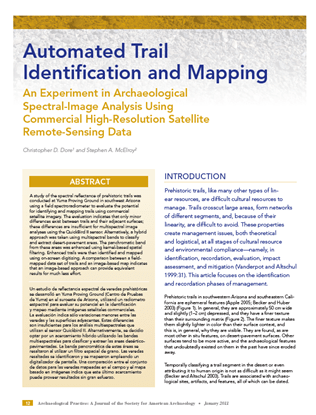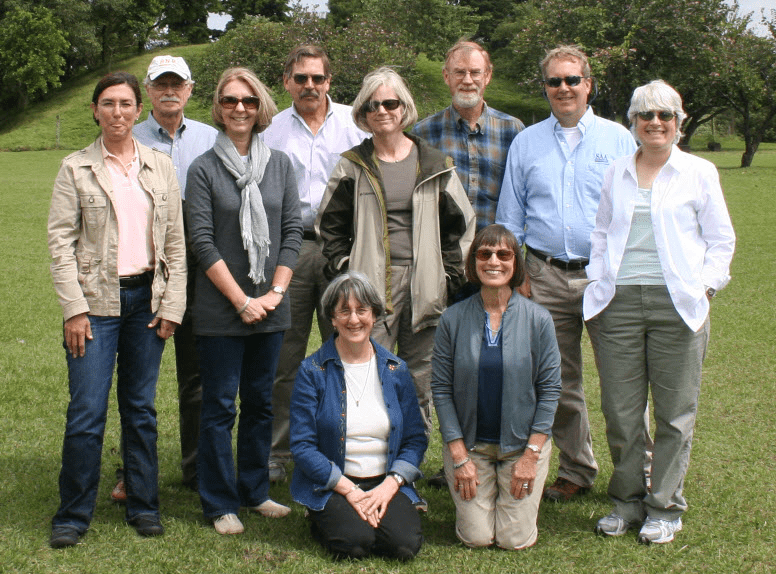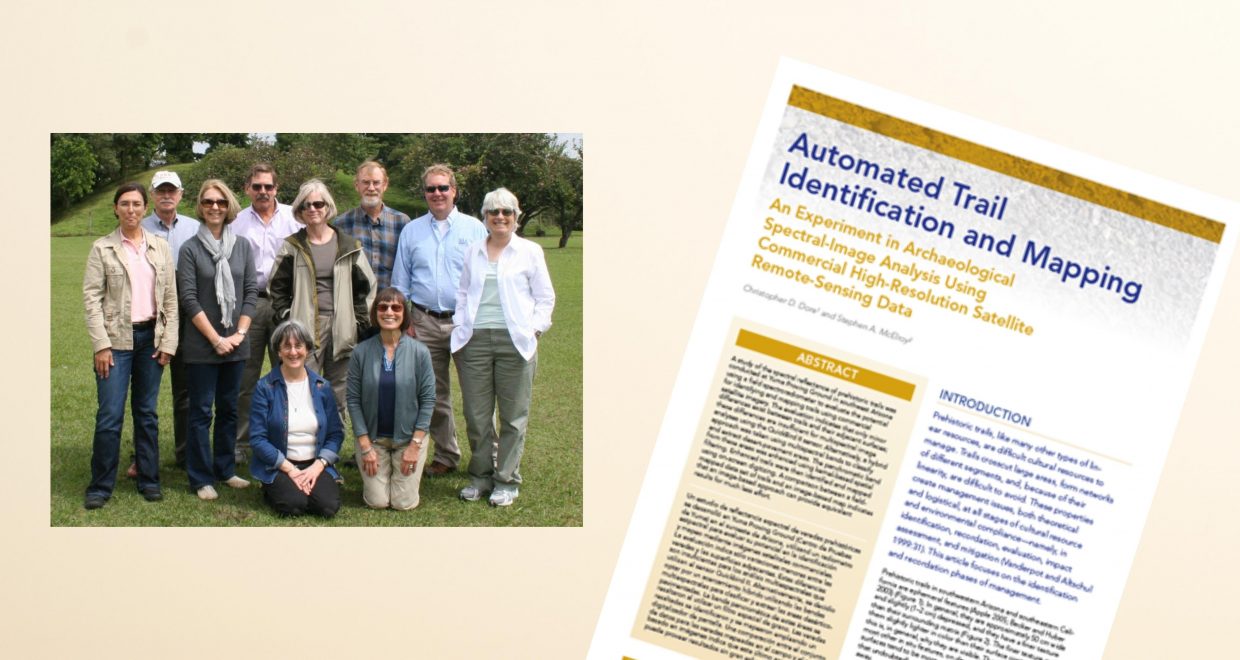How a Rejected Article Started a Journal: The Origins of Advances in Archaeological Practice
Happy birthday! Advances in Archaeological Practice: A Journal of the Society for American Archaeology turns ten this year. You might not think that the birth of a journal is that big of a deal and certainly doesn’t warrant recognition a decade later. However, for the Society for American Archaeology (SAA) starting a new journal, only done three times before in SAA’s history, was a significant event for both the Society and American archaeology. Why did SAA decide to launch a new journal, what led up to the decision, and why is the journal structured in the way that it is? Answers to those questions, and some other historical tidbits, follow.
The idea of a new journal began with my own personal frustrations. I wrote an article with Dr. Stephen McElroy on the results of a statistical experiment to see if the use of multispectral remote sensing, with spectroradiometer ground calibration, could be used to automatically identify and map human trails in southwest Arizona using inexpensive, readily available, commercial satellite imagery. This was a problem-oriented article about how to do archaeology and not an article about what we learned about the past by doing it. Following the publication model of “hard” sciences, our article was short and to the point. Because it involved a spatial component, multi-spectral imagery, and spectrum data, color illustrations were critical to telling our story and keeping our prose short. Was our experiment a success story? Only partially. Aspects of our study that would not be considered research success by typical standards were extremely valuable to learning and keeping other researchers from making the same mistakes we did.
We submitted our manuscript to several appropriate journals and were rejected by all of them. There were two major editorial comment themes. The first was about the color illustrations: too many, couldn’t publish color, or expensive page charges. The second was a “revise and resubmit” theme essentially saying something like we would love to publish this article if it included a review and discussion of the literature on prehistoric trails. Our answer was always no. Multiple editors missed the point of our article. It wasn’t about prehistoric trails in the past. It was about how we identify, map, and manage a challenging resource type using more accurate and efficient methods. Where could we publish short, focused, problem-oriented research about how we do archaeology? Nowhere.
During this period, I was serving as a director and then as the treasurer-elect of SAA. The officers and directors at that time were phenomenal, forward-looking, strategic thinkers: Meg Conkey, Barbara Arroyo, Cory Breternitz, Jonathan Driver, Kathy Kamp, Barbara Mills, and Paul Welch. The Board was generally frustrated that the requisite two, two-day Board meetings each year were generally full of small decisions about committee appointments, etc., with some larger policy issues needing attention tossed in from time-to-time. These topics filled up four days each year and there was never any time for doing what Boards are supposed to be doing: big-picture strategic thinking.
It might sound funny to you, but we wanted yet another Board meeting that year (2009) to allow us to focus on nothing but where we thought the SAA should, and could, be at its centennial in 2035. We wanted to address the changing needs of archaeologists and the services SAA provided to support them. We wanted to reevaluate some of the fundamental assumptions and practices of SAA as an organization that had been slowly institutionalized over 75 years, that were perhaps no longer relevant, and about which we heard criticism from members. It was an awesome meeting, the best SAA Board meeting I’ve ever attended, and I’ve attended a lot of them. Items that were discussed included diversity, why SAA had failed in developing a culture of giving, reassessing committees and their charges, strategies for brining younger colleagues to leadership, what professional development is for SAA, push/pull models for providing member benefits, regional chapters, SAA’s value proposition, changing professional needs, and establishing a new conference (Conferencia Intercontinental) structured in a way to avoid unpopular issues with the Annual Meeting.
At this meeting held in January 2010, I discussed my frustrations about my manuscript with the Board. I also noted that archaeologists like me rarely read SAA’s “antiquity” journals anymore, only picking out the occasional articles that directly pertained to their specific research interests. My job at the time, and today, was related to the issues of archaeological professional and scientific practice, not directly learning about the past. Like many contemporary archaeologists, I was a facilitator of research and management, not a researcher. My points resonated with the Board members. After much brainstorming and debate, and a little on-the-fly market research, the Board recommended that the Executive Director bring cost estimates for launching a new journal to the Spring 2010 Board meeting. This was done, and at the Spring 2010 Board meeting funds were allocated for market research and for the preparation of a mock-up issue (Figure 1). One of the four articles in the January 2011 mock-up was our still-never-published trail article (Figure 2). Following another year of research and planning, the Board passed Motion 128-64.1 in October 2011 authorizing the establishment of the journal when sufficient funds had been allocated. Funding was shortly allocated, and in April 2012 Motion 129-64.1B was passed instructing the Executive Director to launch the journal.
The initial format, content, and editorial policy of the journal rectified many of my original concerns: articles were research findings about how archaeology was practiced, short, problem oriented, written in “plain language” so that all archaeologists could understand them, heavily graphical, and open to publishing “failed” research if it was a contribution. Not to disadvantage younger authors without name recognition, a double-blind peer review policy was implemented (unlike SAA’s other journals). Recognizing that contributions to practice, especially technology research, were time sensitive, the review and publication process was established to minimize the time from submittal to publication. In fact, reviewers were asked to make recommendations in two weeks. Importantly, the journal was only digital. This allowed full-color graphical content making the journal more effective in conveying information, but also making it fun to read: a research journal in a magazine format. It wasn’t all about appearance, though. An all-digital journal allowed the inclusion of dynamic media that couldn’t be published elsewhere. For example, articles could include video, animations, and the execution of computer code.
That’s a little about the history and philosophy of the journal. Over the last decade the journal has published many innovative and influential articles. It has led to the recognition that archaeology includes legitimate scholarly research about practice in addition to research about the past. It is a journal that is read, rather than used as only a reference source. I’m very proud of the journal and the articles that were published under my initial editorship. I’m pleased that my successor editors Drs. Sarah Herr, Christina Rieth, and Sjoerd van der Linde have taken the journal into new areas that I, my editorial board, and editorial team didn’t contemplate in those first frantic years of publication. May the journal’s next decade bring continued innovation and changes to keep it engaging, influential, and pushing the limits of archaeological publication. Happy birthday!








